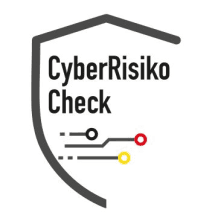AI and Big Data: Protection Strategies

Share the blog with others
The era of AI and Big Data has not only revolutionized the way we use and analyze data, but has also created new challenges for data protection strategies and IT security. This article highlights the complex relationships between these technologies, data protection laws, and best practices for data security.
Data Protection in the Context of AI and Big Data
Data Collection and Processing
AI systems and Big Data technologies depend on large amounts of data, with privacy needing to be protected through techniques such as anonymization and tokenization to prevent misuse.
Case Study: Anonymization in Health Research
A current project in the healthcare sector used anonymized patient data to identify disease patterns without revealing the patients' identities.
IT Security in the Era of AI and Big Data, Security of Data and Infrastructure
Protecting data sources and infrastructure is essential, including the use of encryption and access controls.
Customer Key Encryption provides companies that store data in the cloud with a way to retain control over their data.
Future Trends and Developments
Use of AI in Cybersecurity: AI systems may increasingly be used in the future to detect and respond to security threats.
Privacy-oriented AI Development: It is expected that the focus will grow on developing AI systems that consider privacy.
Increasing Regulation: Stricter data protection laws may be introduced to keep pace with technological developments.
Challenges in Implementation
The increasing interconnectivity and diversity of data sources complicate the assurance of comprehensive data protection. Companies face the challenge of fully leveraging the potential of Big Data and AI without compromising privacy. The differences in data protection laws worldwide make it difficult for multinational companies to implement global data protection standards.
The Role of Technology in Data Protection
New developments in encryption technology, such as quantum encryption, could play an even greater role in the future. Automated systems and AI can help to detect and rectify data breaches more quickly.
Conclusion and Outlook
Data protection in the era of AI and Big Data presents a complex and dynamic challenge. While technological developments open up new possibilities, they also require a constant review and adaptation of data protection practices. Companies that pursue a proactive and comprehensive data protection strategy can not only meet regulatory requirements but also strengthen the trust of their customers, thus securing a competitive advantage. In the future, innovations in technology will continue to shape the landscape of data protection and offer both new challenges and solutions.
Enhanced surveillance capabilities: The ability of AI to recognize patterns and connections in large datasets can be used for both protecting privacy and threatening it.
Ethics and AI: The use of AI also raises ethical questions, particularly regarding bias and discrimination in algorithmic decisions.
Data Protection in Specific Industries, & Healthcare
The use of Big Data and AI in the financial sector poses particular challenges regarding the security of financial information and compliance with stringent regulatory requirements. In healthcare, protecting sensitive patient data is crucial, with the use of this data for research purposes requiring a careful balance between privacy and utility.
Integrating Data Protection into Corporate Culture
Data protection as part of corporate ethics: Companies should view data protection as a central component of their ethics and culture, not just as a legal obligation.
Fostering a data protection-conscious culture: Training and regular communication about the importance of data protection help raise awareness among employees.
New Technologies and Their Impact on Data Protection
Blockchain in Data Protection: Blockchain technology could open new pathways for secure and transparent data processing.
Artificial Intelligence for Data Analysis: AI can be used to detect data breaches and take preventive measures.








